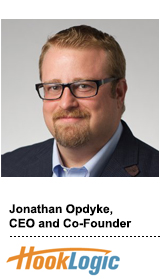 HookLogic raised $15.5 million in Series C funding and will sell AutoHook, a suite of lead-gen and marketing tools designed for automotive companies, the company announced Thursday.
HookLogic raised $15.5 million in Series C funding and will sell AutoHook, a suite of lead-gen and marketing tools designed for automotive companies, the company announced Thursday.
Terms of the AutoHook sale to auto consultancy firm Urban Science were not disclosed.
In addition to previous investors Bain Capital and Intel Capital, this funding round included Fung Capital USA, the private investment arm of the family that owns the Fung Group, a global provider of retail logistics, distribution and supply chain management.
The investment illustrates how infrastructure-level companies that underpin traditional retail are converging with ecommerce technology vendors that want to be an agnostic service for the digital sphere.
HookLogic, founded in 2004, is an ecommerce solutions provider that specializes in ad formats for product feeds, which have taken on new importance as retailers and media across the board adopt feed formats that can be optimized across desktop and mobile. HookLogic CEO Jonathan Opdyke sees these feed-style formats as almost inevitably outperforming “more interruptive” options on the market, particularly on mobile, where an ad in a product feed could occupy up to a third of the screen, compared to 5% to 10% on desktop.
HookLogic has strong adoption in the US, UK and Canada, where it is currently live with a roster of clients that includes Walmart, Target, Best Buy, Macy’s, Argos, Asda, Costco, Expedia and Priceline. But Opdyke said “the big goal” for the rollout is a global expansion, and HookLogic is preparing for “a totally different scenario” for ecommerce solutions targeted at global business.
“Europe and North America have traditional large retailers that have moved online,” said Opdyke, whereas in developing regions, “the digital pure players are a dominant force.”
The addition of Fung Capital USA makes this the most strategic round the company has raised to date, Opdyke said. He sees Fung Capital USA as a crucial partner in accessing ecommerce cauldrons like India and China.
HookLogic’s product in many ways mimics the in-store and trade marketing you find in brick-and-mortar retail, which may include anything from in-store signage to analytics around traffic flow, since it appraises intent and directs visitors within an ecommerce site. For many of the world’s biggest advertisers, particularly CPG and other sectors reliant on retailers, this accounts for higher spending than all digital marketing.
The omnichannel approach may be ubiquitous, but Opdyke described those potential budgets as “something we’ve consciously avoided.” The competition in that arena is fierce, he said, and “that concept of commerce” doesn’t apply to the digital world, where people can bounce between sites and “are just as likely to be shopping on Pinterest or Google as they are on Amazon.”
For retailers, the focus for digital is search – “Amazon and Google’s budgets,” Opdyke said. Fung Capital USA partner John Seung agreed.
“Brands (have) had little or no say over how their products are discovered on the website,” Seung said in an email. “HookLogic gives brands control over where and when their products are presented on the retailer’s site.”
HookLogic can be an integral part of global retail without its name ever appearing in a shop or retail site, Opdyke said.
“Like Fung, we share in greater sales down the value chain,” he said, noting that HookLogic only profits when a brand and site convert on a sale.
The renewed focus on being a structural part of the ecommerce world, a digital brick-and-mortar, played into HookLogic’s decision to spin off its AutoHook division, which Opdyke said was a distraction from the company’s core mission.
“The board made the decision that it belonged within an auto-focused company,” Opdyke said.














